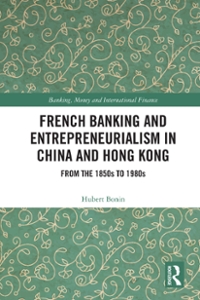Question
1.The greenhouse effect represents an external cost. True False 2.Organic pollution does not represent an external cost. True False 3.External costs occur only with production
1.The greenhouse effect represents an external cost. True False
2.Organic pollution does not represent an external cost. True False
3.External costs occur only with production and not consumption. True False
4.There are opportunity costs associated with reducing pollution. True False
5.The pricing of environmental damage because of pollution is difficult because of intangible losses. True False
6.The EPA estimates that only 10 percent of the current air and water pollution can be eliminated with known and available technology.
TrueFalse
7.Market incentives do not play a role in pollution behavior. True False
8.The key to pollution abatement lies in forcing polluters to externalize their pollution costs. True False
9.Pollution abatement programs result in lower prices being charged for the polluting firm's products. True False
10.In general, technology that reduces pollution will shift both the MC and ATC curves upward. True False
11.Requiring that a firm engage in pollution abatement tends to reduce the firm's profits. True False
12.Firms are highly likely to voluntarily engage in an efficient level of pollution abatement. True False
13.In general, production and consumption decisions are made by balancing private costs and private benefits. True False
14.Externalities are generally reflected in market prices. True False
15.Externalities prevent the market mechanism from achieving the optimal rate of pollution. True False
16.Pollution will decrease when firms are forced to consider externalities as a production cost. True False
17.Externalities are a measure of the divergence between social costs and private costs. True False
18.Private costs are included in social costs. True False
19.Markets will overproduce goods that generate external costs. True False
1.Since 1929, there have been very few advances in farming technology. True False
2.The demand for food is price-inelastic. True False
3.If the price elasticity of demand for farm products is low, abrupt changes in farm output will have a limited effect on prices.
TrueFalse
4.Changes in weather cause abrupt shifts in the food supply curve that result in price fluctuations. True False
5.Given a change in food prices, farmers are typically able to respond rapidly with a change in output. True False
6.Bumper crops generally reduce farm incomes. True False
7.The major problems confronting U.S. agriculture are the downward trend in relative farm prices and abrupt short-term swings in prices.
TrueFalse
8.During the early 1900s, U.S. farm goods were heavily subsidized by the government. True False
9.Demand for U.S. farm products was high during World War I. True False
10.Over the past century, there has been little variation in the price of corn from one harvest to the next. True False
11.Farm support programs most often take the form of price floors, which cause excess demand. True False
12.Acreage set-asides shift the food supply curve to the right and decrease farm prices. True False
13.The Commodity Credit Corporation is a buyer of last resort for selected farm products. True False
14.The loan rate is a low-interest rate at which farmers may borrow from the federal government on a short-term basis.
TrueFalse
15.Whenever the market price for crops is below the Commodity Credit Corporation (CCC) loan rate, the government will end up buying surplus crops.
TrueFalse
16.The effect of Commodity Credit Corporation loan programs is to alter the quantity demanded of farm products as well as to increase the quantity supplied.
TrueFalse
17.If parity prices are "fair" they will not cause a market surplus. True False
18.Today, as a result of government policies, about 25 percent of all farm output is either destroyed or stored. True False
19.The Department of Agriculture distributes $50-$100 million a year to farmers to help defray the costs of fertilizer, drainage, and other production costs.
TrueFalse
20.An increase in fuel prices resulted in higher costs in agriculture during the 1980s. True False
1.The Phillips curve implies a trade-off between interest rates and unemployment. True False
2.A rightward shift of the Phillips curve implies an increase in both unemployment and inflation. True False
3.A leftward shift in AS will cause a leftward shift in the Phillips curve. True False
4.Tax incentives that encourage saving, investment, and work will shift the AS curve to the right. True False
5.Deregulation will cause the Phillips curve to shift to the right. True False
6.An increase in tax rates will yield larger tax revenues only if the absolute value of the tax elasticity of supply is less than 1.0.
TrueFalse
7.Supply-side economists emphasize the importance of saving to finance investment. True False
8.Demand-side economists treat saving as a leakage from potential spending. True False
9.Investment in human capital shifts the aggregate supply curve leftward. True False
10.A basic contention of supply-side economists is that we should reduce the regulation of the production process. True False
11.An increase in tariffs on imported goods will shift the aggregate supply curve to the left and cause the level of output to decrease.
TrueFalse
12.An improvement in the infrastructure of a country, ceteris paribus, should result in a lower price level and increased employment.
TrueFalse
13.Infrastructure improvements are more important to Keynesian economics than to supply-side economics. True False
Step by Step Solution
There are 3 Steps involved in it
Step: 1

Get Instant Access to Expert-Tailored Solutions
See step-by-step solutions with expert insights and AI powered tools for academic success
Step: 2

Step: 3

Ace Your Homework with AI
Get the answers you need in no time with our AI-driven, step-by-step assistance
Get Started


